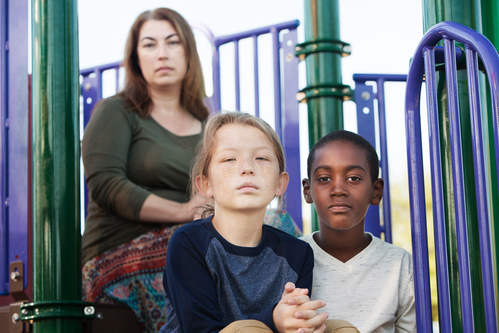 Many churches discourage the use of lawsuits to resolve a dispute. However, conflict may arise in the religious setting, such as disagreements between parishioners, issues between churches, purchases that church administrators make that others may disagree with or other disputes that arise that affect the church or parishioners. Mediation often advances the goal of the religious institution and can help to successfully resolve disputes. Mediators help those in conflict in church disputes in the following way:
Many churches discourage the use of lawsuits to resolve a dispute. However, conflict may arise in the religious setting, such as disagreements between parishioners, issues between churches, purchases that church administrators make that others may disagree with or other disputes that arise that affect the church or parishioners. Mediation often advances the goal of the religious institution and can help to successfully resolve disputes. Mediators help those in conflict in church disputes in the following way:
Respect Religion
Mediators are trained in conflict dispute resolution. They understand that a party’s religious and cultural values often help inform his or her thoughts in dispute. The mediator can acknowledge these values and use them in a positive manner to appeal to the parties’ needs and interests.
Discourage Escape Tactics
Sometimes people in conflict use escape tactics to avoid conflict. They may blame the other party or declare that they simply will not be involved in whatever the issue is. A mediator can guide parties away from these reflexive declarations and encourage them to confront the conflict head on. A mediator can explain that conflict provides an opportunity for the parties to come together and work out a solution that works for all parties involved.
Uncover Important Information
Mediators ask clarifying questions and dig for information. This helps them understand what led to the conflict and to identify what the parties’ interests are. Once the mediator has this information, he or she can use it to appeal to the parties’ desire to resolve the conflict while addressing these interests.
Promote Personal Responsibility
Mediators can communicate with each party individually and encourage the party to consider how he or she contributed to the issue and what he or she can do to help resolve the conflict.





 Parties who are injured because of car accidents, slips and falls, defective products or other accidents may decide to litigate their case. The defendant or the victim’s legal counsel may recommend the process of mediation to defray some of the costs involved in litigation and to speed up recovery of financial compensation. Some of the following factors may impact the willingness of the parties to settle the case in mediation:
Parties who are injured because of car accidents, slips and falls, defective products or other accidents may decide to litigate their case. The defendant or the victim’s legal counsel may recommend the process of mediation to defray some of the costs involved in litigation and to speed up recovery of financial compensation. Some of the following factors may impact the willingness of the parties to settle the case in mediation: There are four basic elements to a negligence claim. These and possible defenses to them are discussed below.
There are four basic elements to a negligence claim. These and possible defenses to them are discussed below. Auto accident mediation is a confidential and voluntary way to potentially resolve an auto accident claim. The victim and the insurance company may attend mediation with a trained third-party neutral who facilitates discussion and guides the parties during the process. Typical auto accident mediation includes the following steps:
Auto accident mediation is a confidential and voluntary way to potentially resolve an auto accident claim. The victim and the insurance company may attend mediation with a trained third-party neutral who facilitates discussion and guides the parties during the process. Typical auto accident mediation includes the following steps: Many children are placed in foster care after Child Protective Services or a similar agency removes them from their natural home because of concerns about the child’s safety or wellbeing. This can often launch a daunting legal proceeding in which parents must prove they have remedied the situation so that the children can be returned to a safe environment. Mediation can be used as an alternative to this formal and stressful litigated process.
Many children are placed in foster care after Child Protective Services or a similar agency removes them from their natural home because of concerns about the child’s safety or wellbeing. This can often launch a daunting legal proceeding in which parents must prove they have remedied the situation so that the children can be returned to a safe environment. Mediation can be used as an alternative to this formal and stressful litigated process. Mediation is an effective tool when dealing with family law issues. In the last few years, the use of mediation in foster care, adoption and dependency and neglect cases has risen exponentially. More communities recognize the efficacy of this tool, spurring them to adopt new mediation programs to address these issues. The traditional adversarial process involved in foster care and child protection cases often has inherent shortcomings that do not serve the best interests of the child or the parties involved. As such, mediation provides an effective alternative.
Mediation is an effective tool when dealing with family law issues. In the last few years, the use of mediation in foster care, adoption and dependency and neglect cases has risen exponentially. More communities recognize the efficacy of this tool, spurring them to adopt new mediation programs to address these issues. The traditional adversarial process involved in foster care and child protection cases often has inherent shortcomings that do not serve the best interests of the child or the parties involved. As such, mediation provides an effective alternative. Libel or defamation cases may arise when someone says something negative about another person such as a business owner that has an adverse effect on his or her reputation. This statement may even be in written form, such as a publication made to the media or a negative review of services. Businesses are particularly concerned about their public image because a negative interaction can cost them business from others down the line. When parties confront these legal challenges, they may decide to litigate the case, or they may decide to mediate it.
Libel or defamation cases may arise when someone says something negative about another person such as a business owner that has an adverse effect on his or her reputation. This statement may even be in written form, such as a publication made to the media or a negative review of services. Businesses are particularly concerned about their public image because a negative interaction can cost them business from others down the line. When parties confront these legal challenges, they may decide to litigate the case, or they may decide to mediate it.